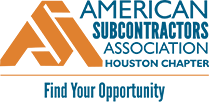On Wednesday Sept. 20, the Occupational Safety and Health Administration announced that from Sept. 23 through Oct. 22, it will help employers who are trying to comply with its rule on respirable crystalline silica, which requires construction employers to limit worker exposure to silica and to take other steps to protect workers. During that 30-day period, all citations under the rule will be reviewed by OSHA at the national level. The memorandum from Thomas Galassi, acting deputy assistant secretary for the U.S. Department of Labor, to OSHA regional administrators, states:
“During the first 30 days of enforcement, OSHA will render compliance assistance and outreach to assure that covered employers are fully and properly complying with its requirements. Given the novelty of the Table 1 approach, OSHA will pay particular attention to assisting employers in fully and properly implementing the controls in the table. OSHA will assist employers who are making good faith efforts to meet the new requirements to assure understanding and compliance.
“If, upon inspection, it appears an employer is not making any efforts to comply, OSHA’s inspection will not only include collection of exposure air monitoring performed in accordance with Agency procedures, but those employers may also be considered for citation. Any proposed citations related to inspections conducted in this time period will require National Office review.”
Under the OSHA standard, construction employers can either use a control method, as laid out in Table 1 of the standard, or they can measure workers’ exposure to silica and independently decide which dust controls work best to limit exposures to the permissible exposure limit in their workplaces. Regardless of which exposure control method is used, all construction employers covered by the standard are required to:
- Reduce the permissible exposure limit for respirable silica to 50 micrograms per cubic meter of air, averaged over an eight-hour shift.
- Use engineering controls, such as water or ventilation, to limit worker exposure to the PEL.
- Provide respirators when engineering controls cannot adequately limit exposure.
- Establish and implement a written exposure control plan that identifies tasks that involve exposure and methods used to protect workers, including procedures to restrict access to work areas where high exposures may occur.
- Designate a competent person to implement the written exposure control plan.
- Restrict housekeeping practices that expose workers to silica where feasible alternatives are available.
- Offer medical exams, including chest x-rays and lung function tests, every three years for workers who are required by the standard to wear a respirator for 30 or more days per year.
- Train workers on work operations that result in silica exposure and ways to limit exposure.
- Keep records of workers’ silica exposure and medical exams.
ASA, in collaboration with 22 other construction associations, has initiated a lawsuit to prevent OSHA from implementing its rule; oral arguments are scheduled for Sept. 26. In addition, ASA, as part of the Construction Industry Safety Coalition, has filed a petition with OSHA requesting the agency to stay and reopen the rulemaking. For more information, see the ASA Fact Sheet on OSHA’s Rule on Respirable Crystalline Silica, the ASA Frequently Asked Questions on the OSHA Standard on Respirable Crystalline Silica, and the free ASA video-on-demand, “OSHA Silica Rule—Applications for Subcontractors” (Item #8101), presented by Gary Visscher, Esq., Law Office of Adele L. Abrams, P.C.

